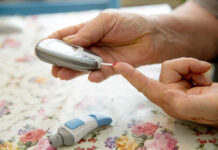
Hundreds of victims are demanding justice after being exposed to a government-approved pregnancy drug that caused cancer and reproductive damage across multiple generations.
Story Overview
- DES victims call for public inquiry into decades-long regulatory scandal affecting millions
- Government agencies ignored 1953 evidence showing drug was ineffective and harmful
- Pharmaceutical companies profited while causing multi-generational cancer and infertility
- No comprehensive government accountability or compensation provided to date
Decades of Government Regulatory Failure
The diethylstilbestrol scandal represents one of the most egregious examples of government regulatory failure in modern history. From the 1940s to 1971, federal agencies approved and promoted DES to millions of pregnant women despite mounting evidence of its dangers. The FDA and other regulatory bodies continued endorsing the drug for eighteen years after a major 1953 study proved it provided no benefit and potentially caused harm.
By 1971, researchers documented a devastating 40-fold increase in rare vaginal and cervical cancers among daughters exposed in utero. The regulatory response came only after irreversible damage had been inflicted on countless families. This delayed action exemplifies the dangerous consequences when government agencies fail their primary duty to protect citizens from corporate malfeasance.
Watch: Dozens of women describe their trauma during pregnancy, labour and birth
Multi-Generational Health Devastation
DES exposure created unprecedented multi-generational health consequences that continue destroying families today. First-generation victims, known as “DES daughters” and “DES sons,” suffer from elevated cancer risks, infertility, and pregnancy complications. The synthetic estrogen’s effects extend beyond the originally exposed individuals, with emerging research indicating potential health impacts in grandchildren as well. These families face ongoing medical monitoring, psychological trauma, and reproductive challenges that span generations. The scope of harm extends far beyond initial projections, with victims experiencing clear cell adenocarcinoma, structural reproductive abnormalities, and compromised fertility.
Pharmaceutical Industry Accountability Gap
Major pharmaceutical companies, including Eli Lilly, manufactured and aggressively marketed DES while downplaying safety concerns and methodological flaws in supporting studies. Although some legal precedents were established through litigation, comprehensive accountability and compensation remain elusive for most affected families. The pharmaceutical industry’s role in this scandal demonstrates the dangers of unchecked corporate influence over medical practice and regulatory policy.
Ongoing Fight for Justice and Accountability
Despite decades of documented harm, no comprehensive public inquiry has been launched in major affected countries as of 2025. Victims and advocacy groups continue pressing governments for formal recognition, investigation of regulatory failures, and establishment of compensation schemes.
This ongoing struggle for justice reflects broader concerns about government accountability and the protection of individual rights against institutional failures. The DES scandal serves as a stark reminder that when government agencies fail their oversight duties, American families pay the ultimate price through destroyed health, shattered dreams, and multi-generational suffering that could have been prevented through proper regulatory vigilance.
Sources:
Diethylstilbestrol Exposure – American Academy of Family Physicians
Diethylstilbestrol – Wikipedia
The DES story: long-term consequences of prenatal exposure – PMC
DES as Pregnancy Treatment – AMA Journal of Ethics
DES Timeline – DES Action
Diethylstilbestrol (DES) and Cancer – National Cancer Institute
DES daughters – Better Health Victoria
DES Follow-up Study – National Cancer Institute


















